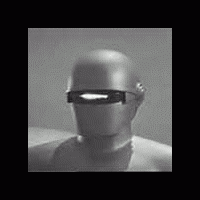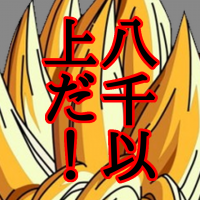訊息: 37
語言: English
Zam_franca (顯示個人資料) 2020年4月8日上午8:51:45
Urho:Here's your beer, sir!PrimeMinisterK:jen =Urho:Jen 100 bazaj verboj de Esperanto (ĉe la lernu!-forumo).Urho:Jen utila bildo de Tabelvortoj (korelativoj)Awesome, thanks!
By the way, what is your use of Jen here? My understanding is that it means "Look! or Behold!" Does it have a difference nuance here in your sentence?
• (eng) here is/are
• (rus) вот [vot]
• (fin) kas tässä, tässä
Jen via biero, sinjoro!
RiotNrrd (顯示個人資料) 2020年4月8日下午2:26:31
As long as you know what you're trying to say, it really isn't. Does the sentence contain something which is acting? That's the subject. Is it acting on something else? That's the direct object. Put an -n on it
We do it all the time in English, though not to the extent it is done in Esperanto.
"I see him", not "I see he".
PrimeMinisterK (顯示個人資料) 2020年4月9日上午6:28:57
RiotNrrd:I can't imagine trying to mark the accusative on fly when speaking. Sounds like a nightmare.I can see what you're saying. I guess I see "he" and "him" as two different words though, which of course they are, so it's a little different than having to run around attaching Ns to stuff.
As long as you know what you're trying to say, it really isn't. Does the sentence contain something which is acting? That's the subject. Is it acting on something else? That's the direct object. Put an -n on it
We do it all the time in English, though not to the extent it is done in Esperanto.
"I see him", not "I see he".
I think it wouldn't be nearly as bad if the -n didn't have to go on so many things. If it were just the direct object, that would be one thing. But I feel like in Esperanto you had to run around attaching Ns to all kinds of stuff: nouns, pronouns, adjectives . . . some of the correlatives you have to attach Ns to sometimes.
And then you have to keep up with all the Js too. Ns and Js. It's exasperating.
Zam_franca (顯示個人資料) 2020年4月9日下午6:01:19
In order to learn the correlatives, I had rewrote the following tabulation: https://learn.esperanto.com/en/tabelvortoj/
nornen (顯示個人資料) 2020年4月9日下午6:21:26
PrimeMinisterK:I guess I see "he" and "him" as two different words though, which of course they areAnd that's a 100% valid interpretation. The word "word" has no well defined meaning. It can relate to both a lexeme (an atomic unit of meaning) and an inflected form (a word-form that can appear in a sentence).
"he" and "him" are two different word-forms of the same lexeme HE.
"eat", "eats", "eating", "eaten", "ate" are different word-forms of the same lexeme EAT.
"hundo", "hundoj", "hundon", "hundojn" are different word-forms of the same lexeme HUNDO.
so it's a little different than having to run around attaching Ns to stuffTry to look at it from the other side: In Esperanto you say "mi kuras" and "li kuras", but in English you say "I run" and "he runs", having to run around attaching Ss to stuff.
Every language has its own morphology. We just have to accept this.
In Esperanto you have to mark accusative, in English generally not.
In English you have to mark the third person singular present tense indicative, in Esperanto not.
- - - -
At least Esperanto morphology is more or less predictable:
Mi kuras -> mi kuris
I run -> I ran
Mi amas -> mi amis
I love -> I loved
Mi batas -> mi batiss
I beat -> I beat
In Eo "as" becomes always "is", in English it is mostly guesswork.
PrimeMinisterK (顯示個人資料) 2020年4月10日上午8:27:37
nornen:I think that it's not having to tag the direct object that's much a problem, it's having to also mark up surrounding words as well. It just gets overwhelming once a sentence gets too populated with mark-able words. Like I said in my other post, it's not just the Ns but also the Js. It's a lot to have to do.
And that's a 100% valid interpretation. The word "word" has no well defined meaning. It can relate to both a lexeme (an atomic unit of meaning) and an inflected form (a word-form that can appear in a sentence).
"he" and "him" are two different word-forms of the same lexeme HE.
"eat", "eats", "eating", "eaten", "ate" are different word-forms of the same lexeme EAT.
"hundo", "hundoj", "hundon", "hundojn" are different word-forms of the same lexeme HUNDO.so it's a little different than having to run around attaching Ns to stuffTry to look at it from the other side: In Esperanto you say "mi kuras" and "li kuras", but in English you say "I run" and "he runs", having to run around attaching Ss to stuff.
Every language has its own morphology. We just have to accept this.
In Esperanto you have to mark accusative, in English generally not.
In English you have to mark the third person singular present tense indicative, in Esperanto not.
- - - -
At least Esperanto morphology is more or less predictable:
Mi kuras -> mi kuris
I run -> I ran
Mi amas -> mi amis
I love -> I loved
Mi batas -> mi batiss
I beat -> I beat
In Eo "as" becomes always "is", in English it is mostly guesswork.
Zam_franca (顯示個人資料) 2020年4月10日上午9:30:44
PrimeMinisterK:I agree with Nornen. This is perfectly normal. In English one does not say "there are two dog". He has to add an 's'.nornen:I think that it's not having to tag the direct object that's much a problem, it's having to also mark up surrounding words as well. It just gets overwhelming once a sentence gets too populated with mark-able words. Like I said in my other post, it's not just the Ns but also the Js. It's a lot to have to do.
And that's a 100% valid interpretation. The word "word" has no well defined meaning. It can relate to both a lexeme (an atomic unit of meaning) and an inflected form (a word-form that can appear in a sentence).
"he" and "him" are two different word-forms of the same lexeme HE.
"eat", "eats", "eating", "eaten", "ate" are different word-forms of the same lexeme EAT.
"hundo", "hundoj", "hundon", "hundojn" are different word-forms of the same lexeme HUNDO.so it's a little different than having to run around attaching Ns to stuffTry to look at it from the other side: In Esperanto you say "mi kuras" and "li kuras", but in English you say "I run" and "he runs", having to run around attaching Ss to stuff.
Every language has its own morphology. We just have to accept this.
In Esperanto you have to mark accusative, in English generally not.
In English you have to mark the third person singular present tense indicative, in Esperanto not.
- - - -
At least Esperanto morphology is more or less predictable:
Mi kuras -> mi kuris
I run -> I ran
Mi amas -> mi amis
I love -> I loved
Mi batas -> mi batiss
I beat -> I beat
In Eo "as" becomes always "is", in English it is mostly guesswork.
But don't worry. 'La teorio Nakamura' will teach you when you have ti mark the plural and the accusative over and over again. You will do it so often that you will certainly become bored of it. But you will master it.
In French we don't pronounce the 's' (that stands for the plural) in words like "chiens" (dogs). When native French speakers learn English, they have to change their habits. This is typically language learning.




